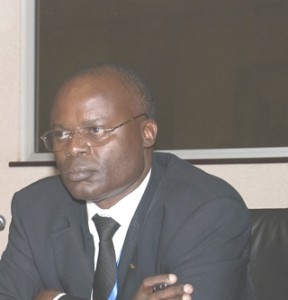Financial inclusion doubles in Uganda
June 27, 2018—Financial inclusion in Uganda has more than doubled in the period between 2006 and 2018 from 28% to 58% of the population accessing formal financial services.

Kasekende said th Finscope report is useful for both policy makers and the private sector to develop business strategies.
In addition, about 20% have access to informal financial services. According to the Finscope 2018 report released this morning, overall, the population of Ugandan adults (16 years and older) stands at 18.6 million. 78% of these have access to some form of financial service from the formal or informal sectors.
However, formal sector financial inclusion is dominated by the use of Mobile Money, which provides only a limited range of financial services, largely payments and the opportunity to save money on the mobile phone. Only 11% of the adult population use a commercial bank or micro deposit taking financial institution and only 3% of the adult population who borrow money do so from a commercial bank.
Making her presentation at the launch event in Kampala, Yakini Development Consulting Managing Director Irma Grundling said, “The main barriers to the uptake of formal services are mostly demand-side driven in nature. Supply side barriers include proximity to commercial banks, unavailability of SACCO services within the residential community and insurance services perceived to be unaffordable. This is the key driver of the uptake of informal financial services. 57% of Uganda’s adult population lives in the rural areas where informal financial services are driven by savings groups.”
Bank of Uganda Deputy Governor Louis Kasekende in his keynote address said, “Finscope provides information which can help to make public policies designed to promote financial inclusion and broaden access to financial services more effective. Its findings suggest the focus of public policy should be to try and broaden the range of financial services to which the population has access. This is particularly from the formal sector financial institutions which can offer a degree of prudential management and customer protection which is not available from the informal sector.”
Kasekende said the government cannot simply direct financial institutions to broaden access to their services to the financially excluded.
“The ‘command economy’ approach that ignores commercial realities such as directing extension of credit to priority sectors was attempted in the 1970s, with disastrous consequences for the banking sector and the economy as a whole. Realistically, the costs of serving low income customers in rural areas outweigh the very limited income streams that can be generated through the provision of these services to them. Consequently, broadening access to financial services is only likely to take place if financial institutions can develop innovative ways to reduce the cost of delivering the said services to low income customers or if the incomes of the financially excluded increase, so that they can afford to purchase more services,” he said.
The cost of credit from formal sector financial institutions frequently attracts criticism in Uganda. While it is true that small scale borrowers often pay high rates of interest for loans from banks or microfinance institutions, these lending rates reflect the real costs incurred by the financial institutions, especially the transactions costs of serving small scale borrowers.
“In a market economy, the main channel through which public policy can influence economic decisions by the private sector is through the incentive structure emanating from regulation and taxation as well as the provision of public services which are complementary to private sector business. With regard to regulation, the amendments to the Financial Institutions Act 2016 allow banks to engage in agent banking.”
He said, “This will facilitate banks to deliver services in locations where it is not commercially viable to establish a conventional bank branch. In addition, financial literacy campaigns as well as provision of information, such as that contained in the Finscope Report, is also a public service which can help the private sector to develop business strategies to expand the market for its services,” Kasekende said.
7

 African Heads of state head to South Korea next week for Summit talks
African Heads of state head to South Korea next week for Summit talks
 Trading leads as main source of income for Ugandans
Trading leads as main source of income for Ugandans
 New leadership for bankers’ umbrella as total assets top $12 billion
New leadership for bankers’ umbrella as total assets top $12 billion
 Brussels Airlines to announce Nairobi service
Brussels Airlines to announce Nairobi service
 SITA promises enhanced travel experience after Materna acquisition
SITA promises enhanced travel experience after Materna acquisition
 Saudia’s 105 aircraft order stretches A320neo lead over rival Max
Saudia’s 105 aircraft order stretches A320neo lead over rival Max
